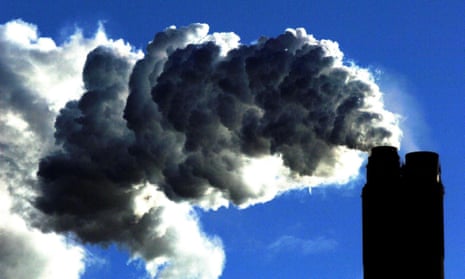Every major country in the world except India reduced its consumption of coal last year, with demand for the dirty fuel forecast to stagnate for the next half decade, according to official forecasts.
The International Energy Agency said 5.3bn tonnes of coal equivalent were burnt in 2016, down 1.9% on the year before and 4.2% on 2014, the fastest decline since 1990-1992, when the global economy was in recession.
Global consumption of coal will stagnate over the next half decade, the IEA forecasts, confirming the last two years’ record falls for the fossil fuel were not a blip.
China, the US and Europe drove the continued drop-off in demand last year, offset only partly by India, one of a few Asian countries where the burning of coal is expected to grow until 2022.
“Although the IEA is very optimistic about the development of renewables and the future role of gas, in some countries coal will also provide a significant share of the electricity needs,” said Keisuke Sadamori, the agency’s director of energy markets and security.
However, he added: “Overall, what we see is a stagnation of coal demand over a decade.”
While solar is making huge strides in India, rapid GDP growth of 7.8% a year and prime minister Narendra Modi’s goal of bringing power to the 240 million Indians without electricity mean coal use will grow too. Coal-fired power generation in India is expected to increase by 4% a year until 2022.
Greenpeace argued that the IEA was being too bearish about the growth of renewables in India, and skewing the picture for coal’s prospects.
Worldwide, the IEA said it expects coal’s share of the energy mix to shrink slightly, from 27% last year to 26% in 2022.
The UK had probably made the quickest transition away from coal of any country so far, Sadamori said. Coal went from 40% of the power mix in 2012 to less than 10% last year, and in the first half of this year provided just 2%.
Sadamori said that declining electricity demand, an ageing coal fleet, EU pollution directives, renewables incentives and the government’s carbon tax had created a “perfect storm” to force the closure of British coal power stations.
There are eight coal power stations left in the UK, and ministers have promised to phase the fuel out entirely by 2025.
The IEA argued that, contrary to what some experts have said, there would be no revival for coal in the UK if gas prices go up, because power imported from Europe would be more competitive.
In the US, where gas last year displaced coal as the top source of power for the first time, Donald Trump’s election and pro-coal measures were seen as providing some optimism for the sector.
However, US coal demand is expected to continue declining over the next five years, albeit at a slower rate than in recent years.

Comments (…)
Sign in or create your Guardian account to join the discussion